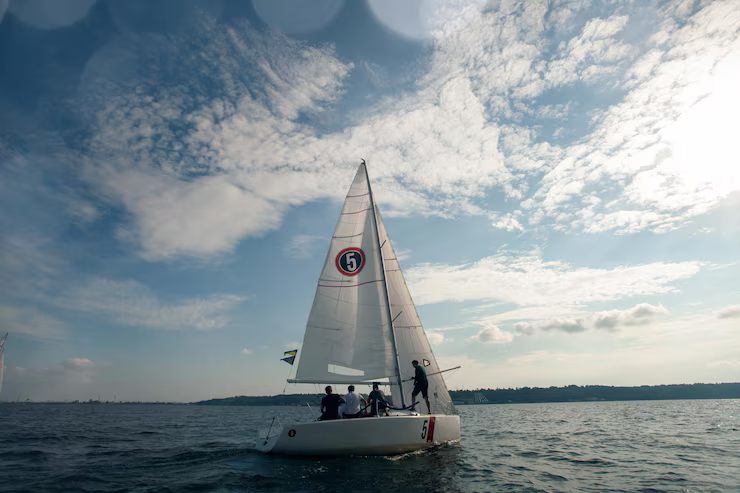When it comes to optimizing your sailing experience, especially on a reliable boat like the Hunter 260, the sail you choose can make or break your adventure. A well-designed sail improves handling, speed, and safety. But not all sails are created equal. This article dives deep into the specifications, materials, and unique design features that set high-quality sails apart—especially those built to custom standards for the Hunter 260.
What is the Hunter 260?
The Hunter 260 is a versatile trailerable sailboat known for its roomy cabin, user-friendly handling, and solid coastal performance. It’s favored by weekend cruisers and novice sailors alike, offering comfort and safety in a manageable package. But to truly unlock its potential, upgrading to a purpose-built sail is essential.
Why Sail Quality Matters for the Hunter 260
Let’s face it, the stock sails that come with boats often leave much to be desired. For the Hunter 260, where ease of sailing and performance are key, the quality of your sail directly impacts your tacking, pointing ability, and control in various wind conditions.
Overview of the Featured Sail Design
The sail designed for the Hunter 260 comes packed with thoughtful, performance-driven features. Every stitch and seam is engineered for longevity and performance.
Loose Foot vs. Bolt Rope: Choosing the Right Fit
Before purchasing, sailors must decide between a loose foot and bolt rope configuration. A loose-footed sail offers more adjustability and shape control, making it a popular choice for racers and cruisers alike. Bolt rope, on the other hand, provides a more secure attachment to the boom.
Material Matters: The Role of Challenge Premium Dacron
Why 5.53oz Dacron is Ideal for Coastal Cruisers
Crafted from 5.53oz Challenge Premium Dacron, this sail boasts high modulus fibers that deliver exceptional shape retention, UV resistance, and strength. This isn’t your run-of-the-mill fabric—it’s specifically chosen for durability and performance under varying wind pressures.
Premium Stitching: A Small Detail That Makes a Big Difference
One often-overlooked element is the stitching. Premium stitching throughout the sail minimizes seam creep, enhances durability, and maintains sail shape over time. This kind of craftsmanship pays off in smoother sails and longer product life.
Sail Features That Stand Out
Aluminum Headboard
The aluminum headboard is not just for looks—it offers a secure, lightweight attachment point at the sail’s head, ensuring reliable hoisting and furling.
Draft Stripe
The draft stripe is a key visual aid. It helps sailors fine-tune sail shape and monitor sail twist, which is essential for optimal performance.
Leech Line with Clamcleat
A built-in leech line with Clamcleat helps reduce flutter along the trailing edge. It’s easy to adjust and ensures your sail remains tight and efficient in high winds.
Telltales for Sail Trim
Telltales are another premium touch that allows sailors to read the airflow across the sail, improving trim and helping beginners learn the nuances of sail handling.
Understanding Sail Control Systems
The Importance of a Cunningham
A Cunningham lets sailors fine-tune luff tension for better sail shape. It’s a pro-level feature that significantly boosts upwind performance.
Reefing: One Reef, Infinite Flexibility
One reef point gives you the flexibility to depower the sail when the breeze picks up. It’s a safety feature that also enhances control in gusty conditions.
Batten Configuration Explained
1 Full Top Batten
The full top batten helps maintain shape and provides support where the sail is most stressed—at the top.
3 Partial Battens
The three partial battens balance structure with flexibility, helping the sail hold its shape while still being responsive in light air.
Custom Touches That Add Value
Insignia
A sail insignia isn’t just aesthetic—it identifies your sailboat class and adds a personalized touch that stands out in the marina.
Sail Ties & Sail Bag
Included sail ties and a durable sail bag make transport and storage a breeze. These aren’t just add-ons—they reflect a full-package mindset.
Dimensions and Fit: Matching to the Hunter 260
Precision is key. With dimensions like a Luff: 30.10′, Leech: 31.25′, and Foot: 10.5′, the sail is tailor-made for the Hunter 260, ensuring a perfect fit and optimal performance.
Performance on the Water
The real test of a sail is on the water. With premium materials, smart features, and tight engineering, this sail handles gusts, tacks smoothly, and lets the Hunter 260 reach its true potential.
Maintenance Tips for Longevity
Keep your sail in top shape with these tips:
- Rinse with freshwater after saltwater use.
- Dry thoroughly before storing.
- Avoid prolonged sun exposure when not sailing.
- Store in a well-ventilated sail bag.
User Experiences & Community Feedback
Sailors who’ve upgraded to this custom sail for their Hunter 260 report better pointing ability, more responsive handling, and peace of mind in rougher conditions. The difference is noticeable from the first tack.
Conclusion
Sailing the Hunter 260 becomes a next-level experience when matched with a sail designed for performance and durability. From high-quality materials like Challenge Dacron to thoughtful design features like full battens and reef points, every element plays a role. It’s not just a sail—it’s your boat’s engine on the water. Investing in quality here means smoother sailing, better speed, and years of reliable use.






